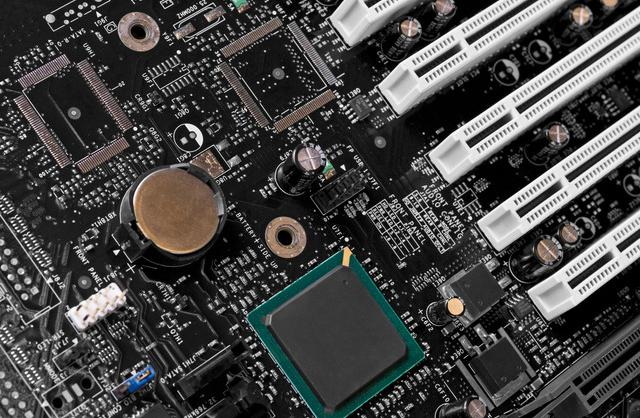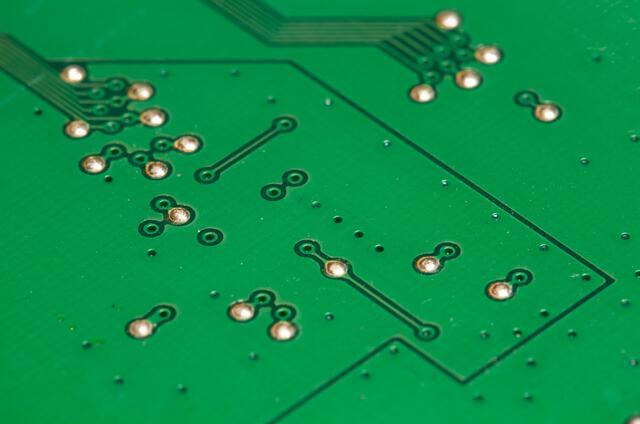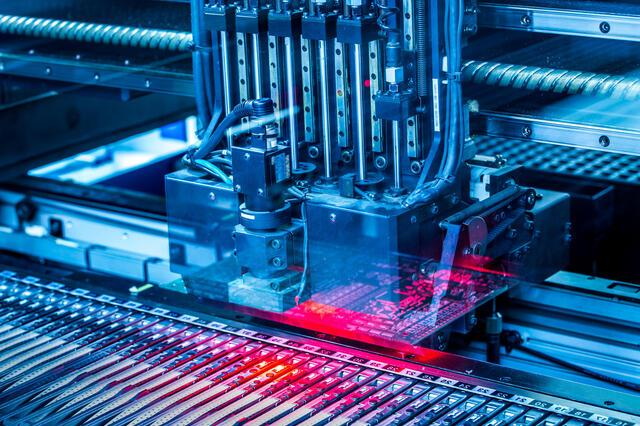Content Menu
● Introduction
● Understanding SMT Nozzles
>> Types of SMT Nozzles
>> Detailed Overview of SMT Nozzle Types
>>> Steel Nozzles
>>> Ceramics Nozzles
>>> Plastic Steel Nozzles
>>> Plastic Nozzles
>>> Aluminum Alloy Nozzles
>>> Iron Nozzles
● Factors to Consider When Choosing SMT Nozzles
>> Additional Considerations
● Applications of Different SMT Nozzle Types
>> Real-world Examples
● Maintenance and Care for SMT Nozzles
>> Common Issues
>> Maintenance Tips
>> Advanced Maintenance Techniques
● Conclusion
● FAQ
>> 1. What are the most common types of SMT nozzles?
>> 2. How does the shape of an SMT nozzle affect its performance?
>> 3. Why is regular maintenance of SMT nozzles important?
>> 4. How do I choose the right SMT nozzle for non-standard components?
>> 5. What factors should I consider for cost-effective SMT nozzle selection?
Introduction
In the rapidly evolving field of electronics manufacturing, achieving precision and efficiency is essential. Surface Mount Technology (SMT) is a widely adopted method for assembling electronic circuits, where components are mounted directly onto the surface of printed circuit boards (PCBs). A pivotal element in this process is the SMT nozzle, which significantly influences the accuracy and speed of component placement. This article aims to provide a comprehensive guide on selecting the right SMT nozzle to optimize performance, ensuring that your manufacturing processes are both effective and efficient.

Understanding SMT Nozzles
SMT nozzles are integral components of pick-and-place machines used in electronics manufacturing. Their primary function is to pick up components from feeders and accurately place them onto PCBs. The variety of SMT nozzles available caters to different applications, materials, and component types.
Types of SMT Nozzles
SMT nozzles can be categorized based on material and shape:
- Materials:
- Steel Nozzles: Renowned for their durability and strength, making them suitable for heavy-duty applications.
- Ceramics Nozzles: Offer high precision and resistance to wear and tear.
- Plastic Steel Nozzles: Provide a balance between cost and performance.
- Plastic Nozzles: Lightweight and cost-effective, ideal for less demanding tasks.
- Aluminum Alloy Nozzles: Known for being lightweight and resistant to corrosion.
- Iron Nozzles: Durable and cost-effective, suitable for general applications.
- Shapes:
- Round Holes: Commonly used for standard components.
- Square Holes: Suitable for larger or specific shapes.
- V-Shaped: Designed for components with unique geometries.
Detailed Overview of SMT Nozzle Types
Steel Nozzles
Steel nozzles are often favored in high-volume production lines due to their robustness. They can withstand significant wear and tear, making them ideal for environments where durability is paramount. However, they may be heavier than other materials, which can affect the speed of the pick-and-place operation.
Ceramics Nozzles
Ceramic nozzles are known for their exceptional precision. They are less prone to wear compared to steel nozzles, making them suitable for applications requiring high accuracy. Their smooth surface reduces friction, allowing for better handling of small components. However, they can be more expensive than other options.
Plastic Steel Nozzles
Plastic steel nozzles combine the benefits of plastic's lightweight nature with the strength of steel. They are often used in medium-duty applications where both cost-effectiveness and durability are required. These nozzles can handle a variety of component sizes while providing reliable performance.
Plastic Nozzles
Plastic nozzles are typically used in low-cost applications or where weight is a significant concern. They are ideal for handling smaller components but may not provide the same level of durability as metal options. Their affordability makes them a popular choice in budget-sensitive projects.
Aluminum Alloy Nozzles
Aluminum alloy nozzles strike a balance between weight and strength. They are resistant to corrosion, making them suitable for environments that may be humid or chemically aggressive. These nozzles can handle moderate workloads effectively while remaining lightweight.
Iron Nozzles
Iron nozzles offer a cost-effective solution for general-purpose applications. While they may not provide the same level of durability as steel or ceramic options, they are sufficient for many standard tasks in electronics manufacturing.

Factors to Consider When Choosing SMT Nozzles
Selecting the appropriate SMT nozzle involves several critical considerations:
- Compatibility with SMT Machines: Ensure that the nozzle is compatible with your specific machine model. Each machine may require different nozzle specifications based on its design and operational parameters.
- Component Size and Shape: The nozzle must be capable of handling the size and shape of the components being placed. Larger components may require wider nozzles, while smaller components might need more precise options.
- Material and Durability: The material of the nozzle affects its longevity and performance. For instance, steel nozzles may last longer but could be heavier compared to plastic options.
- Cost-effectiveness: Evaluate the cost of the nozzle in relation to its performance and durability. Investing in high-quality nozzles can reduce long-term costs associated with replacements and maintenance.
Additional Considerations
- Production Volume: For high-volume production lines, investing in more durable nozzles may lead to lower replacement costs over time due to their longevity.
- Environmental Factors: Consider the operating environment where your SMT machines will be used. Factors such as humidity, temperature fluctuations, and exposure to chemicals can affect nozzle performance.
- Maintenance Requirements: Some nozzle materials require more maintenance than others. Understanding these requirements can help you choose a nozzle that fits your operational capabilities.
Applications of Different SMT Nozzle Types
Different types of SMT nozzles serve various applications based on their unique characteristics:
- Steel Nozzles: Best suited for applications requiring high strength and durability, such as heavy components or high-volume production lines.
- Ceramics Nozzles: Ideal for tasks demanding high precision, particularly in industries where component placement accuracy is critical.
- Plastic Steel Nozzles: Suitable for general applications where cost is a concern but some level of durability is still required.
- Plastic Nozzles: Typically used in lightweight applications or where cost savings are essential.
- Aluminum Alloy Nozzles: Effective in environments where corrosion resistance is necessary, such as in humid or chemically aggressive settings.
- Iron Nozzles: Commonly utilized for general-purpose applications due to their balance of cost and durability.
Real-world Examples
1. Automotive Industry: In automotive electronics manufacturing, steel nozzles are often employed due to their ability to handle larger components like sensors or connectors without risk of damage during placement.
2. Consumer Electronics: For consumer electronics like smartphones or tablets, ceramics nozzles are frequently used because they ensure precise placement of tiny components such as capacitors or resistors that require exact positioning.
3. Medical Devices: In medical device assembly, aluminum alloy nozzles might be preferred due to their resistance to corrosion from sterilization processes while maintaining lightweight properties essential for delicate assembly tasks.
Maintenance and Care for SMT Nozzles
Regular maintenance of SMT nozzles is vital to ensure their longevity and optimal performance. Neglecting maintenance can lead to various issues that affect production efficiency:
Common Issues
- Clogging due to dust or residue buildup can impede proper suction.
- Wear from extensive use may reduce the effectiveness of the nozzle over time.
Maintenance Tips
- Regularly clean nozzles to prevent clogging. Use appropriate cleaning solutions that do not damage the material.
- Inspect nozzles frequently for signs of wear or damage. Replace any that show significant wear to maintain performance standards.
- Properly calibrate nozzles according to manufacturer specifications to ensure accurate component placement.
Advanced Maintenance Techniques
For advanced users, implementing automated cleaning systems can help maintain nozzle cleanliness without manual intervention. These systems utilize ultrasonic cleaning methods or specialized brushes designed specifically for nozzle geometries.
Conclusion
Choosing the right SMT nozzle is crucial for optimizing your SMT process's performance. By considering factors such as compatibility with your machines, component size, material properties, cost-effectiveness, production volume, environmental factors, and maintenance requirements, you can select a nozzle that meets your specific manufacturing needs. Additionally, implementing regular maintenance practices will help ensure that your nozzles perform at their best, reducing defects and improving overall efficiency in your production line.

FAQ
1. What are the most common types of SMT nozzles?
The most common types include steel, ceramics, plastic steel, plastic, aluminum alloy, and iron nozzles.
2. How does the shape of an SMT nozzle affect its performance?
Different shapes like round, square, and V-shaped are suited for various component types and placements; selecting the correct shape ensures optimal pickup and placement accuracy.
3. Why is regular maintenance of SMT nozzles important?
Regular maintenance ensures accuracy and efficiency in the pick-and-place process by preventing defects caused by clogged or worn-out nozzles.
4. How do I choose the right SMT nozzle for non-standard components?
For non-standard components, consider custom nozzles tailored to fit specific shapes and sizes effectively.
5. What factors should I consider for cost-effective SMT nozzle selection?
When selecting a nozzle cost-effectively, balance quality with durability while ensuring it meets your production needs without excessive expenditure.




















